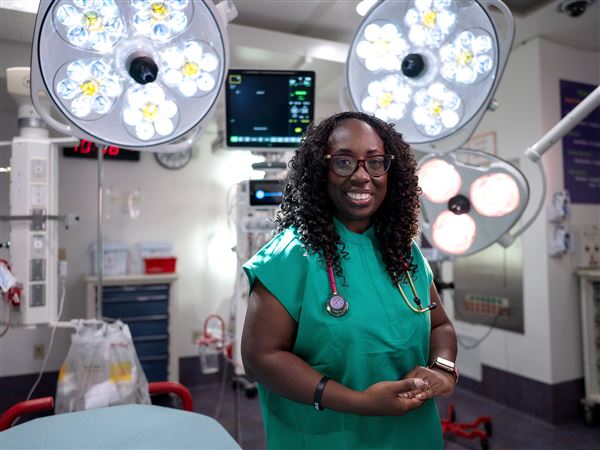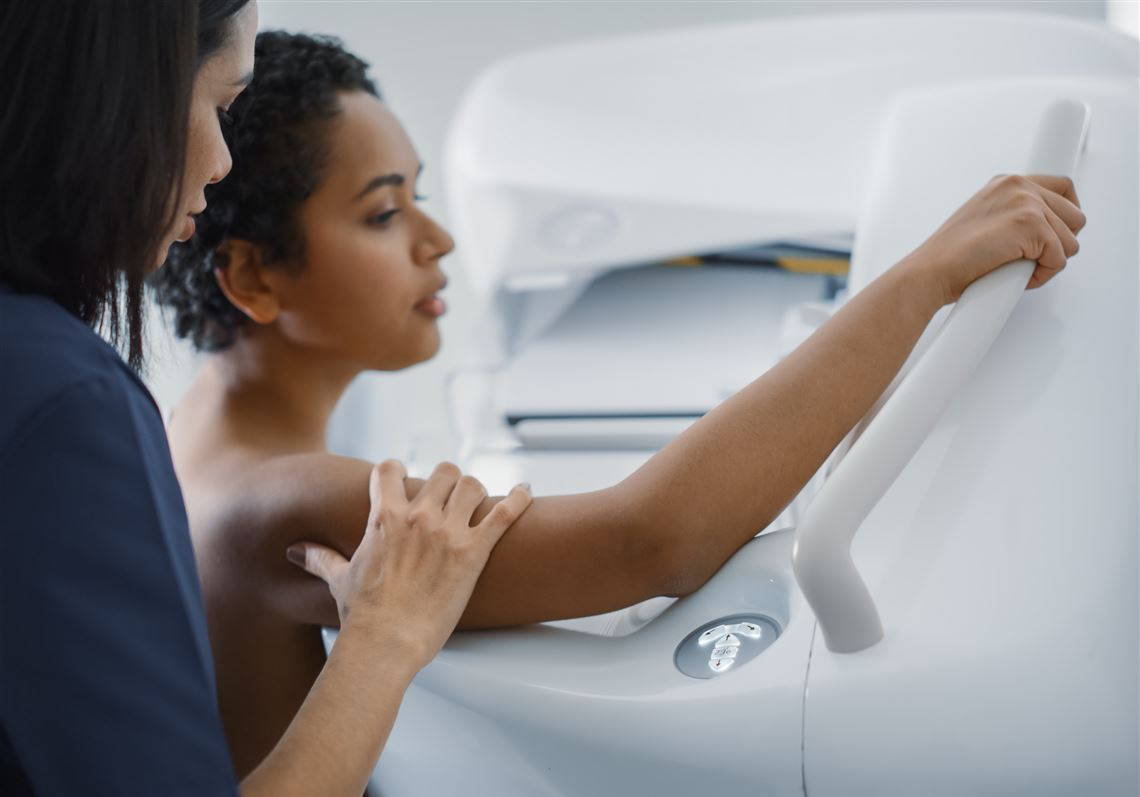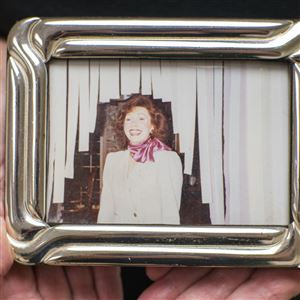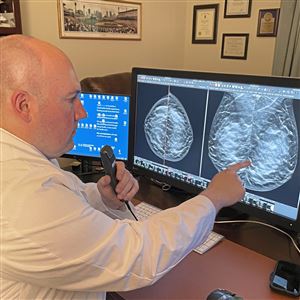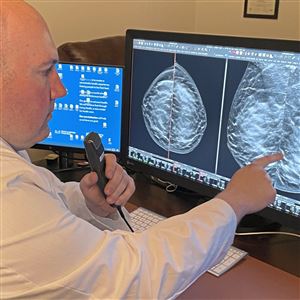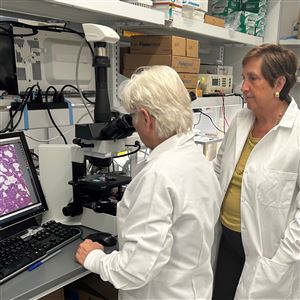For most people, the colors of October are traditionally Black and Orange, marking Halloween. But for many health care facilities and health care providers, October is drenched in pink, due to Breast Cancer Awareness Month.
But what does it really mean to have breast cancer awareness? The short answer is that awareness can mean anything to anyone. But for me, a breast imaging radiologist, I use the “pink spotlight” of October to focus my efforts in spreading awareness of breast cancer facts.
Early detection through annual screening mammography starting at age 40 saves lives. Period.
One in eight women will be diagnosed with breast cancer at some point in their lifetime. To put it more bluntly, breast cancer is the second most commonly diagnosed cancer in women. It accounts for one-third of all new cancers diagnosed in women. If you’re fortunate enough to be without a breast cancer diagnosis, the chances are high that you know someone who isn’t as fortunate.
Breast cancer can occur at any age, but the median age is 63. Studies have shown that the incidence of breast cancer starts to rise sharply after the age of 40. Only about 4% of breast cancer occurs in patients under 40. This is the biggest reason why age 40 has been identified as the appropriate time to start getting an annual mammogram.
But what exactly is this life-saving tool that we call a mammogram?
Simply put, a mammogram is a low-dose X-ray of the breast. X-rays have been around for over a century, but it wasn’t until the late 1980s that they started being used to detect breast cancer. Not coincidentally, it was around the early 1990s when we saw the death rate due to breast cancer start to drop. We’ve effectively cut the death rate in half since then!
Say it again: Annual screening mammography starting at age 40 saves lives.
Screening mammograms are used to detect breast cancer when it’s early and too small to be noticed on a physical exam, often in its most treatable form. Breast cancer is similar to most other cancers in the body in that the smaller the size of the mass, the greater the likelihood of a favorable outcome for the patient. Through the use of mammography, we can detect cancer sometimes as small as a pea! We can even detect breast cancer cells before they invade the surrounding tissue. For these noninvasive stage 0 cancers, the cure rate approaches 100%.
Breast cancer can grow and spread at variable rates. There are some aggressive forms of breast cancer that can develop, grow and metastasize at such a high speed that skipping a year or more can be a deadly mistake. Don’t make that mistake; get your mammogram every year.
You might say, “OK, Dr. Miller. I get my mammogram every year. My last one was a few months ago and was negative but now I feel a new lump. There’s no way it could be breast cancer, right?”
In the words of the great Lee Corso, “No so fast, my friend!”
There is a small subset of breast cancers that cannot be detected mammographically. For this reason, breast symptoms should never be ignored. Knowing what your breast looks and feels like at baseline, during the same time each month, can save your life. If something feels or looks different, be it a lump, skin dimple, nipple change or pain, it should be evaluated at a breast center. We can use specialized mammogram views and/or ultrasound to aid in the workup. Most often, the perceived symptom is not due to breast cancer, but it’s much better to be safe than sorry.
We’ve come a long way in the fight against breast cancer, but the fight isn’t over. Having the awareness to get a mammogram every year starting at age 40 (or earlier if you’re high risk) and never ignoring a symptom are the two most important things you can do to ensure that you’re giving yourself the best chance to survive a potential breast cancer diagnosis.
Remember, early detection saves lives!
Matthew Miller, M.D., is a radiologist with Allegheny Health Network specializing in diagnostic imaging with a focus on breast imaging.
First Published: October 20, 2023, 9:30 a.m.




